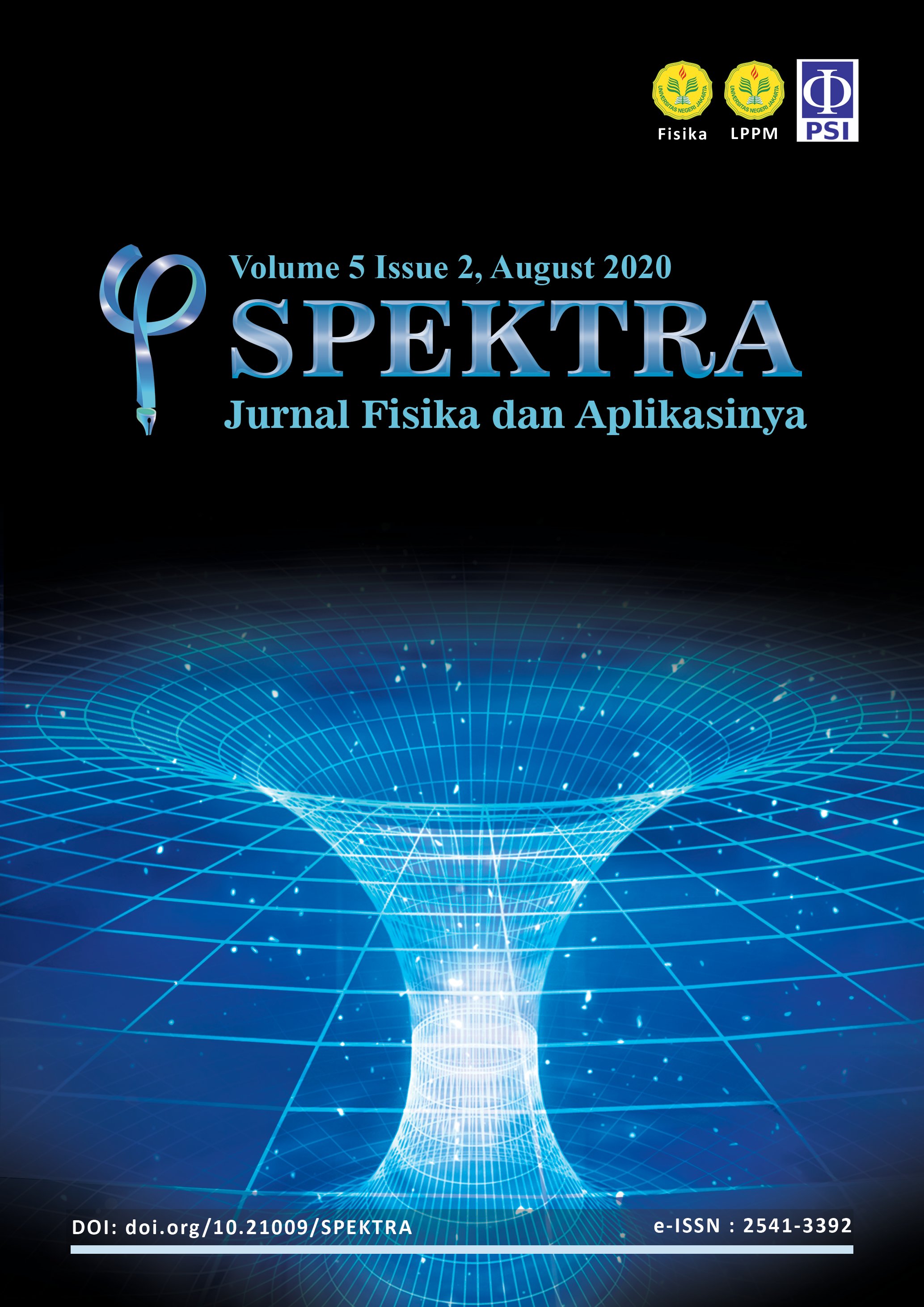THE MONITORING SYSTEM OF INDOOR AIR QUALITY BASED ON INTERNET OF THINGS
DOI:
https://doi.org/10.21009/SPEKTRA.052.06Keywords:
indoor air quality, dust, temperature, IoTAbstract
The indoor air quality monitoring system is needed to find out good air condition. Good air condition can be seen from two (2) factors, namely dust, and temperature. Dust in a room can affect health if it exceeds the threshold of 0.15 mg/m3, and the temperature of 35oC has been determined by SK MENKLH No.02/MENKLH/I/1998. Related to that, we need a system that can determine the temperature and dust conditions in a room. The aim of this research is creating an indoor air quality monitoring system based on the Internet of Things (IoT). This research uses engineering methods, which include planning, design, testing, and system implementation. In this system, when the dust level is more than 0.15 mg/m3 the LED indicator 1 and the active sprayer tell and neutralize the dust content in the air and when the intensity of the temperature is more than 35oC the LED indicator 2 and the active sprayer tell and neutralize the temperature intensity at the room. When both values exceed the set threshold, the LED indicators 1, LED 2, buzzer, the sprayer will be active simultaneously to notify and neutralize the air and temperature in the room. The test results show this system can work well with the percentage of errors in the testing of 12% for dust sensors and 1.6% for temperature sensors.
References
[2] S. Bhattacharya, S. Sridevi and R. Pitchiah, “Indoor air quality monitoring using wireless sensor network,” 2012 Sixth International Conference on Sensing Technology (ICST), 2012.
[3] S. M. Saad et al., “Indoor air quality monitoring system using wireless sensor network (WSN) with web interface,” 2013 International Conference on Electrical, Electronics and System Engineering (ICEESE), 2013.
[4] K. A. Y. Ardam, “Relationship of Dust Exposure and Long Exposure with Lungs Faal Interference of Overhaul Power Plant Workers,” The Indonesian Journal of Occupational Safety and Health, 2017, vol. 4.
[5] Z. Pan, L. Mølhave and S. K. Kjaergaard, “Effects on eyes and nose in humans after experimental exposure to airborne office dust,” Indoor air, 2000, vol. 10.
[6] A. M. Farmer, “The effects of dust on vegetation-a review,” Environmental pollution, 1993, vol. 79.
[7] M. Schwartz, “Encyclopedia and handbook of materials, parts and finishes,” CRC press, 2016.
[8] Menkes, “Health Requirements for Office and Industrial Work Environment,” ed: Keputusan Menteri Kesehatan RI Nomor, 2002.
[9] M. Ilyas and I. Mahgoub, “Smart Dust: Sensor network applications, architecture and design,” CRC press, 2018.
[10] C. A. Alves et al., “Indoor air quality in two university sports facilities,” Aerosol and air quality Research, 2013, vol. 13.
[11] J. Li et al., “Wireless sensor network for indoor air quality monitoring,” Sensors & Transducers, 2014, vol. 172.
[12] N. Marchetti et al., “A campus sustainability initiative: Indoor air quality monitoring in classrooms,” 2015 XVIII AISEM Annual Conference, 2015.
[13] R. Weyers et al., “Low-cost Indoor Air Quality (IAQ) Platform for Healthier Classrooms in New Zealand: Engineering Issues,” 2017 4th Asia-Pacific World Congress on Computer Science and Engineering (APWC on CSE), 2017.
[14] S. Jangid and S. Sharma, “An embedded system model for air quality monitoring,” 2016 3rd International Conference on Computing for Sustainable Global Development (INDIACom), 2016.
[15] A. H. Saptadi, “Perbandingan Akurasi Pengukuran Suhu dan Kelembaban Antara Sensor DHT11 dan DHT22,” Jurnal Infotel, 2014, vol. 6.
[16] A. Wahyudi and S. Agoes, “Implementation of Grating Machine Automation Using Arduino Mega 2560 Microcontroller,” TESLA: Jurnal Teknik Elektro,2017, vol. 18.
[17] M. Kusriyanto and B. D. Putra, “Smart home using local area network (LAN) based arduino mega 2560,” 2016 2nd International Conference on Wireless and Telematics (ICWT), 2016.
[18] L. Louis, “Working Principle of Arduino and Using IT,” Int. J. Control. Autom. Commun. Syst,2016, vol. 1.
Downloads
Published
How to Cite
Issue
Section
License
SPEKTRA: Jurnal Fisika dan Aplikasinya allow the author(s) to hold the copyright without restrictions and allow the author(s) to retain publishing rights without restrictions. SPEKTRA: Jurnal Fisika dan Aplikasinya CC-BY or an equivalent license as the optimal license for the publication, distribution, use, and reuse of scholarly work. In developing strategy and setting priorities, SPEKTRA: Jurnal Fisika dan Aplikasinya recognize that free access is better than priced access, libre access is better than free access, and libre under CC-BY or the equivalent is better than libre under more restrictive open licenses. We should achieve what we can when we can. We should not delay achieving free in order to achieve libre, and we should not stop with free when we can achieve libre.
 SPEKTRA: Jurnal Fisika dan Aplikasinya is licensed under a Creative Commons Attribution 4.0 International License.
SPEKTRA: Jurnal Fisika dan Aplikasinya is licensed under a Creative Commons Attribution 4.0 International License.
You are free to:
Share - copy and redistribute the material in any medium or format
Adapt - remix, transform, and build upon the material for any purpose, even commercially.
The licensor cannot revoke these freedoms as long as you follow the license terms.

 E-ISSN 2541-3392
E-ISSN 2541-3392  Focus & Scope
Focus & Scope  Editorial Team
Editorial Team  Reviewer Team
Reviewer Team  Author Guidelines
Author Guidelines  Article Template
Article Template  Author Fee
Author Fee  Publication Ethics
Publication Ethics  Plagiarism Policy
Plagiarism Policy  Open Access Policy
Open Access Policy  Peer Review Process
Peer Review Process  Retraction & Correction
Retraction & Correction  Licensing & Copyright
Licensing & Copyright  Archiving & Repository
Archiving & Repository  Contact
Contact  Mendeley
Mendeley 

